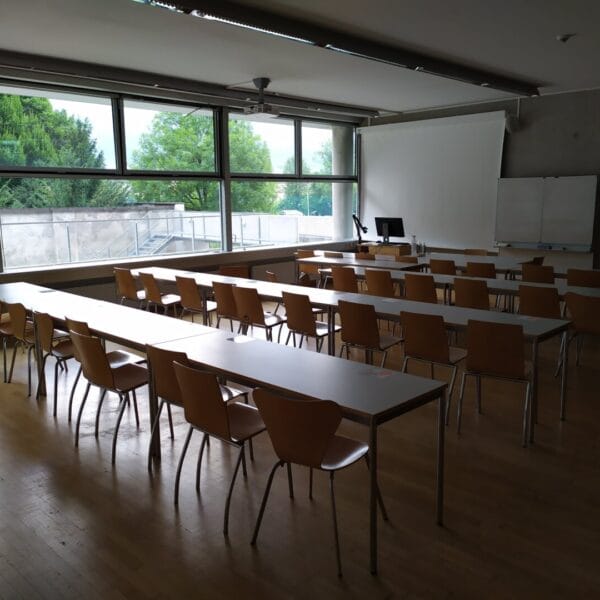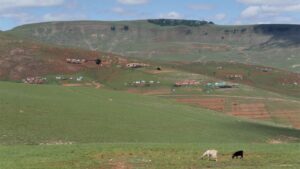ID15: Current Dynamics and trends in Housing in Mountain Area
Details
Full Title
Perspectives for Habitat in Mountain Area face Global Change?
Scheduled
Wednesday, 2022-09-14
16:00-17:30Convener
Co-Conveners
Ilinca-Valentina Stoica and Jean François Tourrand
Assigned to Synthesis Workshop
1. Mountain Ecosystems under Global Change
Keywords
Mountain, Settlement, Habitat, Housing, Trends, Heritage, Climate Change,
Description
The first studies carried out by the HIGHLANDS.3 Project show significant changes in settlement, habitat and housing in mountain. These changes, which have occurred over the last few decades, appear to be largely related to global change, both in these socio-cultural and technical-economic components. The habitat, formerly grouped in villages and hamlets for reasons of mutual aid, security and protection, especially against cold weather, has tended to disperse for a better comfort of the households, as well as their greater economic and cultural independence towards the family and the neighbors. The use of new materials/equipment significantly contribute to promote these changes. At the same time, part of the mountain population tends to preserve its heritage. Moreover, climate change should have a significant impact on the future of settlement and housing in mountain. For this session we would like to present case studies showing changes in settlement/housing in various mountain regions of the world, as well as reflections on past, present and even future trends in mountain habitat.
Registered Abstracts
Abstract ID 593 | Date: 2022-09-14 16:00 – 16:11 | Type: Oral Presentation | Place: SOWI – Seminar room SR3 |
Kozloski, Cássia Laire; Cocco, Renata Michelon
Federal University of Santa Maria, Brazil
Keywords: Green Areas, Local Microclimate, Mitigation, Global Warming
The thermo-energetic behavior of a building is determined not only by internal loads, user behavior and the envelope’s construction characteristics, but also by the influence of the local microclimate, determined by the building’s immediate surroundings. By immediate surroundings we mean the private green areas and setbacks of the building site, the vertical planes of adjacent buildings, and the urban context of insertion. In addition, the importance of these spaces that shape the local microclimate is being investigated internationally with respect to their function in facing climate change, mitigating heat waves and configuring passive strategies of architectural resilience. Complementarily, mountain areas are defined as more vulnerable to global warming (IPCC, 2014), and should be the center of research and action for adaptive capacity. Therefore, in a first moment, through field survey and spatial analysis, the study investigates to characterize green areas in the urban center of Gramado, Rio Grande do Sul, a city of great tourist potential in Serra Gaúcha in the winter period, due to the low temperatures in the altitude zone of the state. This characterization consists of look into the coverage area, vegetation, the relationship between permeable and impermeable area, among others. The results of the study assist in the planning of green areas, mainly private and with direct action on building, at the level of public administration, indicating parameters and standards to be adopted to mitigate future climatic effects in these vulnerable areas of cultural and economic importance.
Abstract ID 571 | Date: 2022-09-14 16:11 – 16:22 | Type: Oral Presentation | Place: SOWI – Seminar room SR3 |
Kozloski, Cássia Laire (1); Tourrand, Jean François (1,2); Vogg, Mariana Cardoso (1); Cocco, Renata Michelon (1)
1: Federal University of Santa Maria, Brazil
2: Cirad-Green & MAAF
Keywords: Urban Exodus, Tourist Areas, Serra Gaúcha
In recent years, the movement of the urban exodus has been quite evident, intensified by SARS-CoV-2 pandemic, driven by challenges such as the lack of adequate housing, poor basic sanitation, ideological reasons and/or the everyday life dynamics. In this sense, Serra Gaúcha, a well-known tourist area, has been the stage of this movement, named “neorural”, defined as voluntary immigrants of previous urban residence and dissatisfied with the city environment (KARPINSKI, 2020). The profile of these immigrants seems to be quite homogeneous, consisting of people with higher education, with total transfer or in the process of transfer from the city to the rural area, and who already have a professional connection with the land, being still professionally active. This movement is also noted in other areas, as is the case of the Pyrenees in Spain, where, from reports made during the first session of Highlands.3 project, mountain areas have become a place of settlement for the migrant population from nearby towns, and the lack of housing and overvaluation of existing properties has been noted. In this sense, this study proposes to investigate the “neorrural” movement in the Serra Gaúcha region, with the investigation of housing patterns and conditions, characterization of settlements, rural land use, and the profile of migrants. Local interviews and spatial analyses will be used for the investigation.
Abstract ID 554 | Date: 2022-09-14 16:22 – 16:33 | Type: Oral Presentation | Place: SOWI – Seminar room SR3 |
Stoica, Ilinca-Valentina (1,2); Vîrghileanu, Marina (2,3); Zamfir, Daniela (1,2)
1: University of Bucharest, Romania, The Interdisciplinary Center for Advanced Research on Territorial Dynamics (CICADIT)
2: University of Bucharest, Romania, Faculty of Geography
3: University of Bucharest, Romania, Romanian Young Academy
Keywords: Built-Up Area Expansion, Brasov Metropolitan Area, Carpathian Mountains
After 1990, the surroundings of the post-communist cities registered multiple transformations under the impact of political and socio-economic radical shifts from centralized planning to free-market capitalism. The changes were felt both in terms of shape and structure of the settlements, as well as in terms of the type of houses, building materials, and their comfort level. A defining feature of the post-communist period, which led to the creation of a fragmented territorial pattern, is the unplanned expansion of built-up areas, fostered by the lack of sustainable national policies in the urban planning field and by a weak regulatory framework.
Brasov represents one of the largest and most dynamic cities in the Carpathian Mountains, located in the historical region of Transylvania. The Brasov metropolitan area covers a surface of over 1500 km2, overlapping besides Brasov city another 17 territorial administrative units and comprising a population of over 480,000 inhabitants. In order to evaluate the built-up area expansion over the last decades, Corine Land Cover dataset was used along with several indicators calculated on the basis of relevant statistical data. Through these analysis, the stages of transformation, the driving forces which triggered the changes, and the different types of spatial patterns are highlighted. The results show an explosive growth of the built-up area and a decentralisation of the economic functions into the territory, with the emergence of some more attractive areas and the reconversion of several former industrial sites, mainly for residential and logistic purposes.
Abstract ID 175 | Date: 2022-09-14 16:33 – 16:44 | Type: Oral Presentation | Place: SOWI – Seminar room SR3 |
Drouet, Quentin; Gauchon, Christophe
University of Savoie Mont Blanc (Fr), France
Keywords: Second Homes, Multi Local Dwelling, Tourist Areas, Permanent Living
The social, environmental and economic benefits and impacts of second homes have been clearly established by researchers over the last decades, but knowledge to avoid competitive effects on permanent housing or professional tourist accommodation is still very limited (Coppock, 1977, Roca, 2013). Different policies are implemented by local authorities in the Alps: mainly spatial planning, land use policies, real estate regulations and fiscal measures (Borsdorf, 2014; Clivaz, 2013).
The starting point of this focus session is to put under question the effectiveness of local public planning to cope with the pressure of the second home market for preserving permanent housing and local population. Alpine tourism municipalities record different demographic changes and patterns in national censuses, in a similar context of high second homes demand (Sonderegger and Bätzing, 2013). However, accurate demographic accounting and forecasting remains difficult with the temporary population of second home owners and seasonal workers in tourist areas (Elmi and Perlik 2014; Bausch, 2017). An analysis of residential choices rather than a demographic approach seems more appropriate to understand the resilience of permanent mountain living due to the multi local dwelling phenomena in tourist destination (Stock, 2006). Many factors can influence the preservation of the permanent living in tourist mountain areas, between demographic structure, amenity migration, gentrification, labour market, access to permanent housing, metropolitan dynamics nearby the tourist destinations, age of the resort, public facilities, access to mobility and multi-local dwellers (Elmi and Perlik 2014; Stock, 2006). Public policies try to set limits to the development of second homes through quantitative monitoring and administrative categorisations on the typology of housing. As the clear status of occupants might fade with multi-residential profiles, researchers stress the need for an accurate assessment of the lifestyle of second home owners (Borsdorf 2013, Müller 2020).
This empirical approach might lead to a better understanding of the negative and positive impact on permanent living in mountain tourist areas. Due to the multifactorial aspect of second homes, the discussion is also at the junction of other disciplinary topics such as tourism and environment. Can a tourism strategy be based more on local residents and second home owners than on distant visitors who have a higher carbon footprint and may have a greater environmental impact? Does the residential duplication of households have a significant impact on urban sprawl? The residential footprint approach seems to be at the junction of interdisciplinary research topics.



